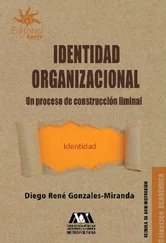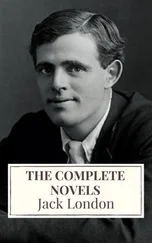Manoel Gonzales - London in 1731
Здесь есть возможность читать онлайн «Manoel Gonzales - London in 1731» — ознакомительный отрывок электронной книги совершенно бесплатно, а после прочтения отрывка купить полную версию. В некоторых случаях можно слушать аудио, скачать через торрент в формате fb2 и присутствует краткое содержание. Жанр: foreign_antique, foreign_prose, на английском языке. Описание произведения, (предисловие) а так же отзывы посетителей доступны на портале библиотеки ЛибКат.
- Название:London in 1731
- Автор:
- Жанр:
- Год:неизвестен
- ISBN:нет данных
- Рейтинг книги:5 / 5. Голосов: 1
-
Избранное:Добавить в избранное
- Отзывы:
-
Ваша оценка:
- 100
- 1
- 2
- 3
- 4
- 5
London in 1731: краткое содержание, описание и аннотация
Предлагаем к чтению аннотацию, описание, краткое содержание или предисловие (зависит от того, что написал сам автор книги «London in 1731»). Если вы не нашли необходимую информацию о книге — напишите в комментариях, мы постараемся отыскать её.
London in 1731 — читать онлайн ознакомительный отрывок
Ниже представлен текст книги, разбитый по страницам. Система сохранения места последней прочитанной страницы, позволяет с удобством читать онлайн бесплатно книгу «London in 1731», без необходимости каждый раз заново искать на чём Вы остановились. Поставьте закладку, и сможете в любой момент перейти на страницу, на которой закончили чтение.
Интервал:
Закладка:
There is not one church in this ward at present. The officers of the ward are, an alderman, his deputy, four common-council men, four constables, two scavengers, sixteen for the wardmote inquest, and a beadle.
5. Bishopsgate Ward is divided into two parts, one within Bishopsgate, and the other without.
The streets and places in this ward, within the gate, are, all Bishopsgate Street, part of Gracechurch Street, all Great and Little St. Helen’s, all Crosby Square, all Camomile Street, and a small part of Wormwood Street, with several courts and alleys that fall into them.
That part of this ward that lies without Bishopsgate extends northwards as far as the bars, being the bounds of the City freedom on this side.
The principal streets and places in this ward, without the gate, are, Bishopsgate Street, Petty France, Bethlem Court and Lane, and Devonshire Square; besides which, there are little courts and alleys without number between Bishopsgate Street and Moorfields.
The public buildings in this ward are Leather-sellers’ Hall, Gresham College, the churches of St. Botolph, Bishopsgate, St. Ethelburga, and St. Helen.
London Workhouse, for the poor of the City of London, also stands in this ward, just without Bishopsgate, being a long brick edifice four hundred feet in length, consisting of several work-rooms and lodging rooms for the vagrants and parish children brought thither, who are employed in spinning wool and flax, in sewing, knitting, or winding silk, or making their clothes or shoes, and are taught to write, read, and cast accounts. The grown vagrants brought here for a time only are employed in washing, beating hemp, and picking oakum, and have no more to keep them than they earn, unless they are sick; and the boys are put out apprentices to seafaring men or artificers, at a certain age, and in the meantime have their diet, clothes, physic, and other necessaries provided for them by the house, which is supported by private charities, by sums raised annually by the City, or by the labour of the children, which last article produces seven or eight hundred pounds per annum.
6. Broad Street Ward contains part of Threadneedle Street, Bartholomew Lane, part of Prince’s Street, part of Lothbury, part of Throgmorton Street, great part of Broad Street, Winchester Street, Austinfriars, part of Wormwood Street, and part of London Wall Street, with the courts and lanes running into them.
The public buildings in this ward are Carpenters’ Hall, Drapers’ Hall, Merchant Taylors’ Hall, the South Sea House, the Pay Office, Allhallows on the Wall, St. Peter’s Poor, the Dutch Church, St. Martin’s, St. Bennet’s, St. Bartholomew’s, St. Christopher’s, and the French Church.
The most magnificent and beautiful edifice of the kind in this ward, and indeed in the City of London, is the South Sea House, lately erected at the north-east corner of Threadneedle Street, near Bishopsgate Street, and over against the church of St. Martin Outwich. It is built of stone and brick.
The several offices for transacting the business of this great company are admirably well disposed; and the great hall for sales is nowhere to be paralleled, either in its dimensions or ornaments, any more than the dining-room, galleries, and chambers above.
7. Cornhill Ward comprehends little more than the street of the same name, and some little lanes and alleys that fall into it, as Castle Alley, Sweeting’s or Swithin’s Alley, Freeman’s Yard, part of Finch Lane, Weigh House Yard, Star Court, the north end of Birching Lane, St. Michael’s Alley, Pope’s Head Alley, and Exchange Alley.
Cornhill Street may, in many respects, be looked upon as the principal street of the City of London; for here almost all affairs relating to navigation and commerce are transacted; and here all the business relating to the great companies and the Bank are negotiated. This street also is situated near the centre of the City, and some say, upon the highest ground in it. It is spacious, and well built with lofty houses, four or five storeys high, inhabited by linendrapers and other considerable tradesmen, who deal by wholesale as well as retail, and adorned with the principal gate and front of the Royal Exchange. Here also it is said the metropolitan church was situated, when London was an archbishopric.
Exchange Alley, so denominated from its being situated on the south side of this street, over against the Royal Exchange, has long been famous for the great concourse of merchants and commanders of ships, and the bargains and contracts made there and in the two celebrated coffee-houses in it, which go under the respective names of “Jonathan’s” and “Garraway’s,” where land, stocks, debentures, and merchandise, and everything that has an existence in Nature, is bought, sold, and transferred from one to another; and many things contracted for, that subsists only in the imagination of the parties.
The public buildings in this ward are, the Royal Exchange, and the churches of St. Peter and St. Michael.
The Royal Exchange is situated on the north side of Cornhill, about the middle of the street, forming an oblong open square, the inside whereof is a hundred and forty-four feet in length from east to west, and a hundred and seventeen in breadth from north to south; the area sixty-one square poles, on every side whereof is a noble piazza or cloister, consisting of twenty-eight columns and arches that support the galleries above.
The length of the building on the outside is two hundred and three feet, the breadth a hundred and seventy-one, and the height fifty-six. On the front towards Cornhill also is a noble piazza, consisting of ten pillars; and another on the opposite side next Threadneedle Street, of as many; and in the middle of each a magnificent gate. Over the Cornhill gate is a beautiful tower, a hundred and seventy-eight feet high, furnished with twelve small bells for chimes; and underneath the piazzas are capacious cellars, which serve for warehouses.
The whole building is of Portland stone, rustic work; above the arches the inward piazza is an entablament, with fine enrichments; and on the cornice a range of pilasters, within entablature, and a spacious compass pediment in the middle of the corners of each of the four sides. Under the pediment on the north side are the king’s arms; on the south those of the City; and on the east the arms of Sir Thomas Gresham. And under the pediment on the west side the arms of the Company of Mercers, with their respective enrichments. The intercolumns of the upper range are twenty-four niches, nineteen of which are filled with the statues of the kings and queens regent of England, standing erect with their robes and regalia, except that of King James II. and King George II., which are habited like the Cæsars.
On the south side are seven niches, of which four are filled, viz.: —
1. The most easterly figure, which has this inscription in gold letters, Edvardus Primus Rex , Anno Dom. 1272. 2. Westward, Edvardus III. Rex , Anno Dom. 1329. 3. Henricus V. Rex , Anno Domini 1412. 4. Henricus VI. Rex , Anno Domini 1422.
On the west side five niches, four of which are filled, viz.: —
1. Under the most southerly figures is subscribed in gold letters, Edvardus IV. Rex , Anno Domini 1460. 2. Northward (the crown pendent over his head) Edvardus V. Rex , Anno Domini 1483. 3. Henricus VII. Rex , Anno Domini 1487. 4. Henricus VIII. Rex , Anno Domini 1508.
On the north side seven niches are filled, viz.: —
1. The most westerly, subscribed in golden characters, Edvardus VI. Rex , Anno Domini 1547. 2. Maria Regina , Anno Domini 1553. 3. Elizabetha Regina , Anno Domini 1558. 4. Is subscribed Serenissim & Potentissim’ Princip’ Jacobo Primo , Mag. Brit’ Fran’ & Hibern’ Reg. Fid. Defensori , Societas Pannitonsorum posuit , A.D. 1684. 5. ΕΙΚΩΝ ΒΑΣΙΛΙΚΗ Serenissimi & Religiosissimi Principis Caroli Primi , Angliæ , Scotiæ , Franciæ Hiberniæ Regis , Fidei Defensoris ; Bis Martyris ( in Corpore Effigie ) Impiis Rebellium Manibus , ex hoc loco deturbata confracta , Anno Dom. 1647. Restituta hic demum collocata , Anno Dom. 1683. Gloria Martyrii qui te fregêre Rebelles non potuere ipsum quem voluere Deum . 6. Carolus Secundus Rex , Anno Domini 1648. 7. Jacobus II. Rex , Anno Domini 1685.
Читать дальшеИнтервал:
Закладка:
Похожие книги на «London in 1731»
Представляем Вашему вниманию похожие книги на «London in 1731» списком для выбора. Мы отобрали схожую по названию и смыслу литературу в надежде предоставить читателям больше вариантов отыскать новые, интересные, ещё непрочитанные произведения.
Обсуждение, отзывы о книге «London in 1731» и просто собственные мнения читателей. Оставьте ваши комментарии, напишите, что Вы думаете о произведении, его смысле или главных героях. Укажите что конкретно понравилось, а что нет, и почему Вы так считаете.












